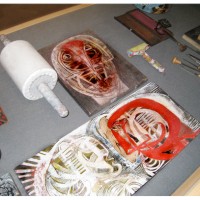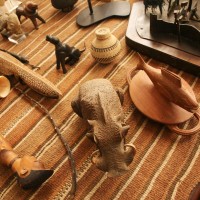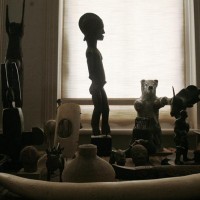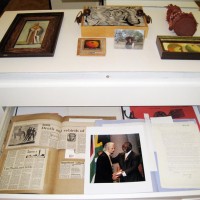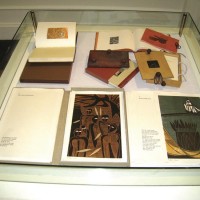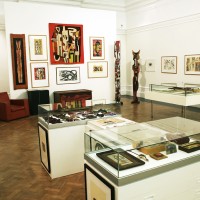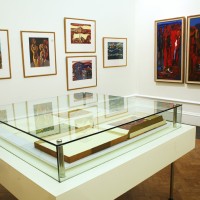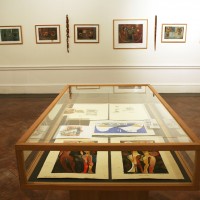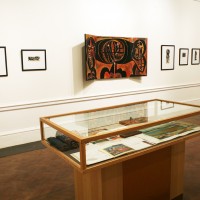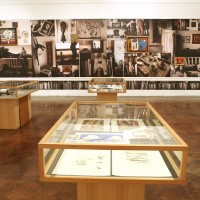Whilst Cecil Skotnes was undoubtedly an icon of the South African art world, this exhibition moved beyond the artist’s public face to reveal a more personal view. This exhibition, rather than trying to recreate a history or tell a version of the story of Thelma Carter and Cecil Skotnes and the people they came to know, or offer an interpretation of their lives and work, presented (as far as this is possible), instead, some of the archive itself. For over fifty years, Thelma Skotnes acted as family archivist extraordinaire, carefully filing all correspondence both written (a carbon copy) and received, and creating scrapbooks of newspaper articles, reviews of exhibitions, invitations and related telegrams. A selection of these, collected and displayed on the exhibition, offered an insight into the local art world of the second half of the twentieth century. The real archive, of course, is the house in which they lived together and which was home to all the dinners for which Thelma received countless letters of thanks; Cecil’s studio, visited by school pupils, friends, young artists in need of help and advice, and poets, writers and other artists who collaborated with Cecil; the house also contains many of the objects that Cecil and Thelma bought, were given or traded for artworks over their lifetime. Every object seems to have a story that glows with heartfelt generosity and friendship.
The intention was to exhibit works by Cecil Skotnes – recognisable works and less known works – drawn exclusively from the Skotnes household (not a retrospective drawing on collections from around the world). To reveal the diversity of the archive, examples of some of the drawings, sketches, paintings, prints, woodblocks, artist’s books, portfolios and artist materials as well as letters, newspaper clippings, invitations and photographs were also included.
We wanted to present the experience of being in the archive, of the physical presence of the objects and documents – not just the artworks or Cecil’s studio, but the house itself, where Cecil left his mark, from carving into bedroom cupboards to creating a mosaic on an exterior wall. The objects that they collected and were inspired by are also resident here, and it is the diversity of these objects and the stories that they can tell that give one a sense of richness in this archive. Photographs of the house were taken by Paul Weinberg and curated as an installation in the exhibition.
The exhibition showed at the South African National Gallery in Cape Town and the Standard Bank Gallery in Johannesburg and was curated by Pippa Skotnes and Thomas Cartwright.

